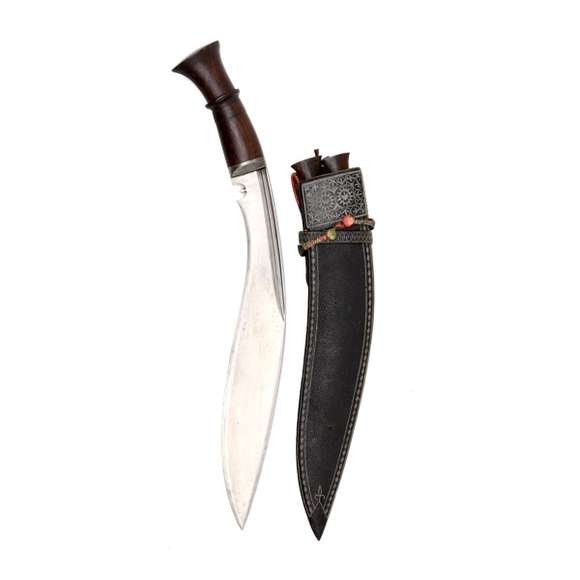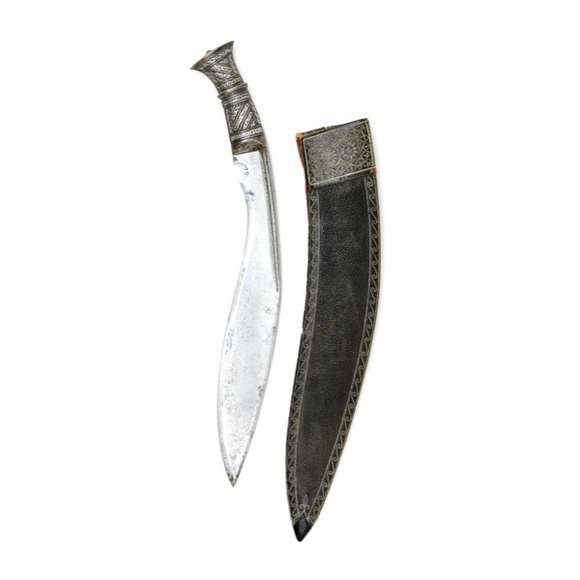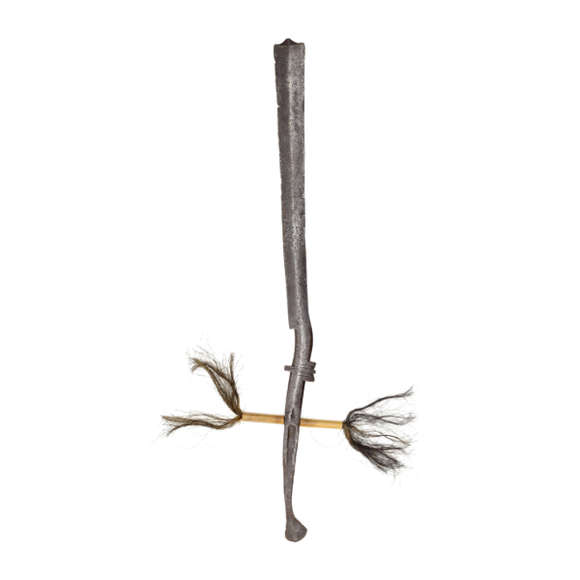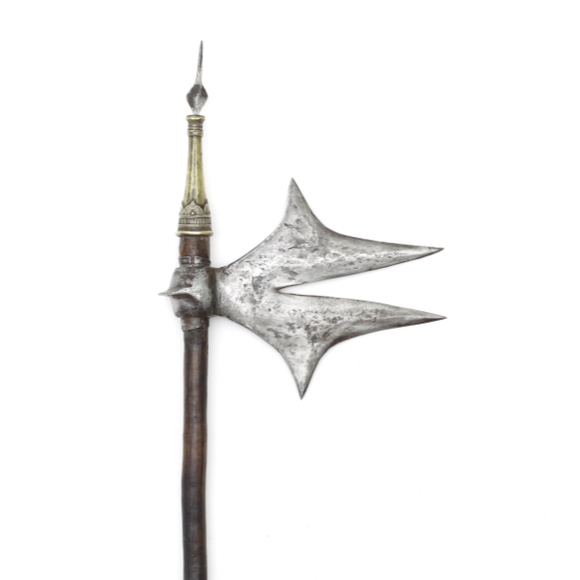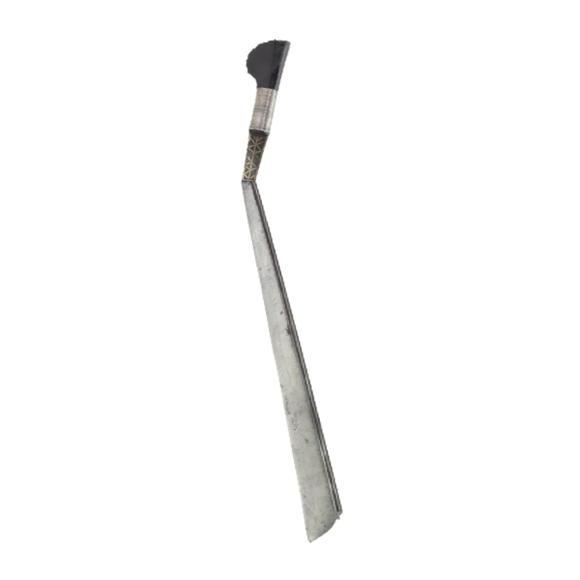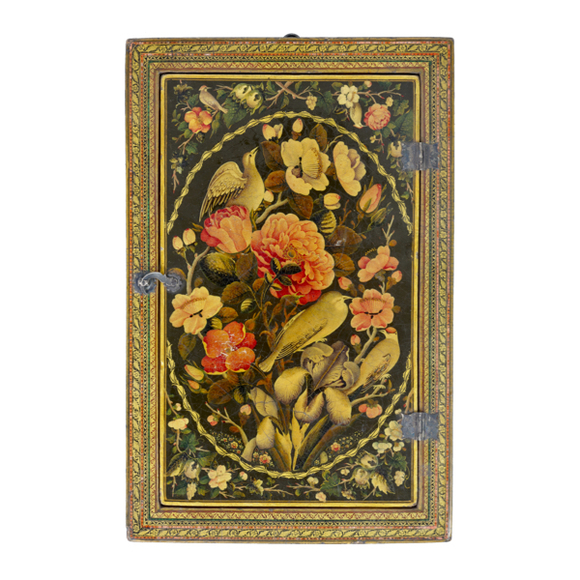An understated, elegant khukuri of substantial proportions with fine layered blade.

90.5 cm
78 cm
Base 6 mm
Middle 5 mm
5 cm from tip 3.5 mm
Base 35 mm
Middle 29 mm
5 cm from tip 19 mm
844 grams
20.5 cm from crossguard
Steel, copper, wood, silk velvet, gold, silver, resin
Kutch, Gujarat, North India
19th century
From a British private collector
Description
The blade is of Persian shamshīr style, with a narrow deeply curved blade. The ricasso at the base of the blade betrays it was not a Persian, but an Indian maker who forged it. It is made of fine pattern-welded steel, showing an effect that was achieved by forge folding the blade with layers of steel with different compositions, making indentations into its surface, and then polishing it smooth so we see the underlying layers. After an etch, the different layers come out in different shades and some are eaten away to form a bit of a topography. The process is very labor-intensive and is a great showcase for the skill of the smith.
Mountings
Blade and scabard are mounted in a complete set of gilt copper mounts, worked in repousse and finished with fine chiseling. The style of the work with stylized flowers is typical for work done in Kutch. See also a nice jambiya style dagger in the same style elsewhere on this site.

The blade has a partial stamp at the base of the blade, commonly seen on blades from North India and possibly maker's marks. Further up the blade are two cartouches with texts:
ﻭﻻﻳﺖﻋﻠﻰ
Velāyat-e Ali
Trusteeship Ali
&
ﺟﻰﺻﺎﺣﺐﺑﻦﺳﻦ
Ji Sāheb Ben Sen
Becomes the Owner Benson
The invocation to Ali of course refers to the cousin and son-in-law of Muhammad, of which was said:
"No warrior but Ali, no sword but Zulfiqar"
Benson
Benson is an English name, indicating it was probably made for a British person stationed there at the time. Tracing down which Benson is hard, as it was a fairly common name and no initials are given. The hilt, in Mamluk style, was very popular among British officers. A trend that started around 1800 and would last throughout the 19th century.
Comparable examples
A number of similar shamshīr apparently with Kutch style mounts and the similar, unusual layout and shape of the scabbard mounts, were shown in the Indian and Colonial Exhibition in South Kensington, London, 1886.

Published in Badel Powell; Indian arms and armour
Journal of Indian Art, Vol. VI. 1896.
Restoration
One of the gilt copper strips on the scabbard was missing. It was recreated by Karel Schermerhorn of Haarlemse Zilversmederij K.H. Schermerhorn.

Restored scabbard strip. Left, the new piece. Right, an original.



















With iron, silver overlaid hilt. Its associated scabbard features fine quillwork.
This peculiar sword was used by the Garo people of Assam for fighting, clearing the jungle, and animal…
Made of pasteboard, finely lacquered with roses and nightengales.

